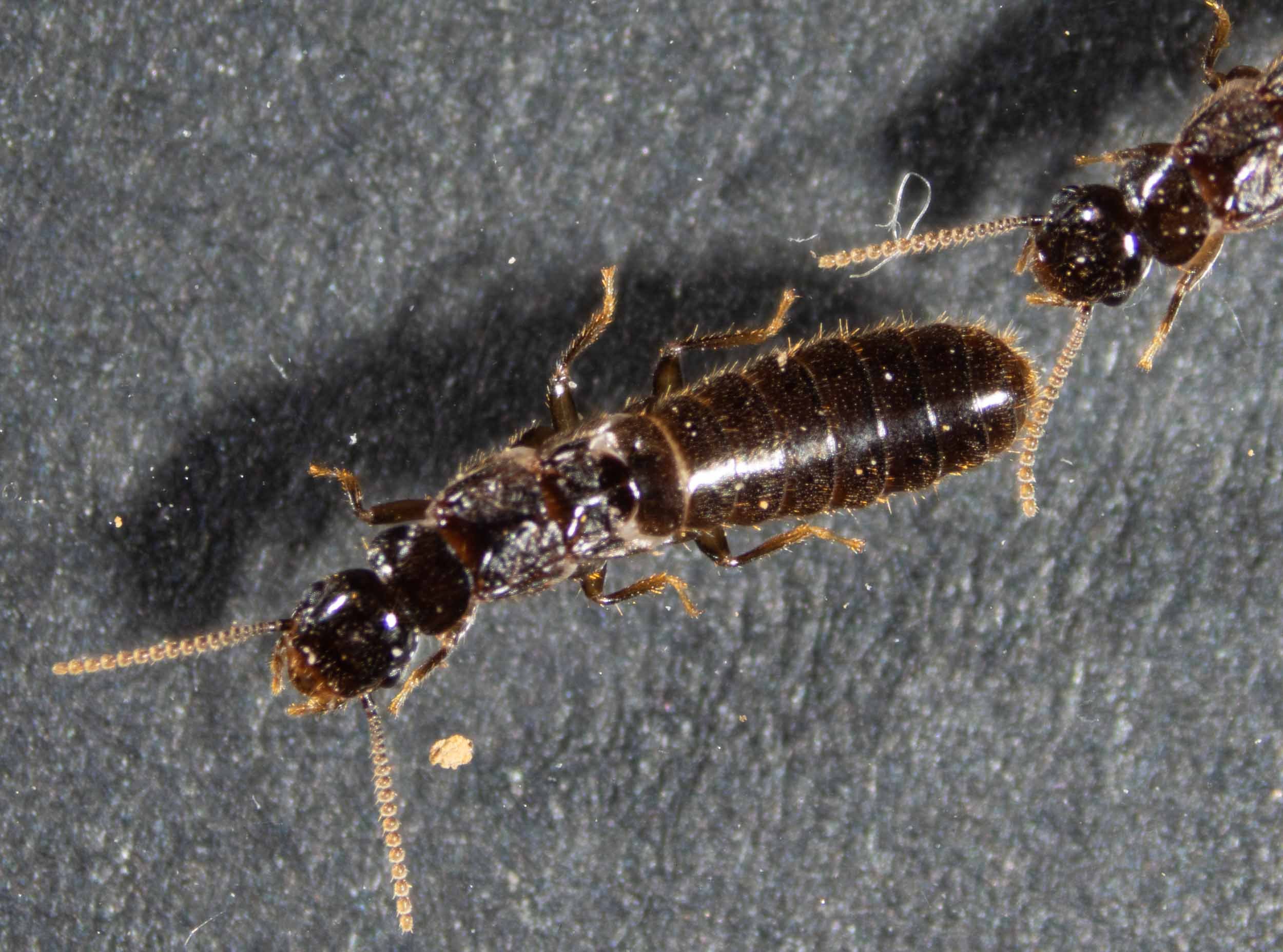
dealate female with pursuing male - dorsal view: head, thorax, dorsal side of abdomen and tibiae very dark brown; upper surface of femora and antennae lighter brown; pronotum large, nearly as wide as head, anterior margin widely concave, sides narrowed to a widely rounded posterior margin, which is deeply notched

alate male head: head very dark brown, upper surface of antennae lighter brown, postclypeus yellowish brown; antennae of 19 segments, 3rd segment very small, 4th and 5th usually equal in size.
![dealate female - lateral view: tarsi whitish; head, thorax and abdomen densely clothed with long hairs; eyes moderately large (0.25 x 0.29 [0.25] - 0.33 x 0.36 [0.32]mm diam.), prominent; ocelli small (0.11 [0.10]mm diam.), well separated from eyes](https://images.squarespace-cdn.com/content/v1/58ec80a8d2b857fe42e4f603/1663631180039-1B88NGDY4RIE4RC5ZS64/P9170010-Edit-scale-2.jpg)
dealate female - lateral view: tarsi whitish; head, thorax and abdomen densely clothed with long hairs; eyes moderately large (0.25 x 0.29 [0.25] - 0.33 x 0.36 [0.32]mm diam.), prominent; ocelli small (0.11 [0.10]mm diam.), well separated from eyes
![dealate female - ventral view: length of body 5.25 - 7.00 [6.80] mm; width of head 1.06 - 1.30 [1.15] mm; sternites of abdomen mostly yellowish brown](https://images.squarespace-cdn.com/content/v1/58ec80a8d2b857fe42e4f603/1663629234674-7P9CD0SW667WPU38MBLM/P9100095-Edit.jpg)
dealate female - ventral view: length of body 5.25 - 7.00 [6.80] mm; width of head 1.06 - 1.30 [1.15] mm; sternites of abdomen mostly yellowish brown
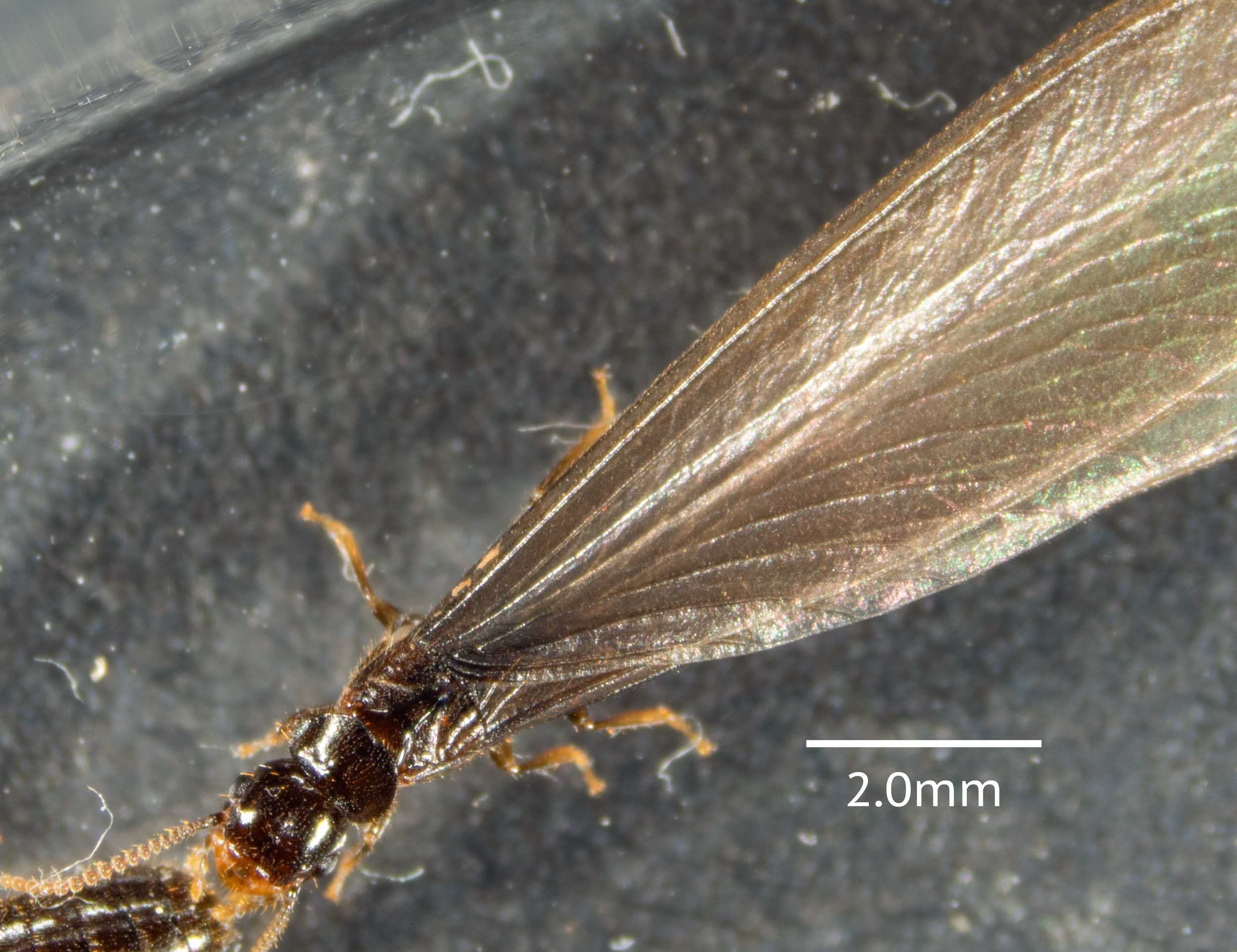
alate male, pursuing female: wings very long, densely covered with micrasters and hairs
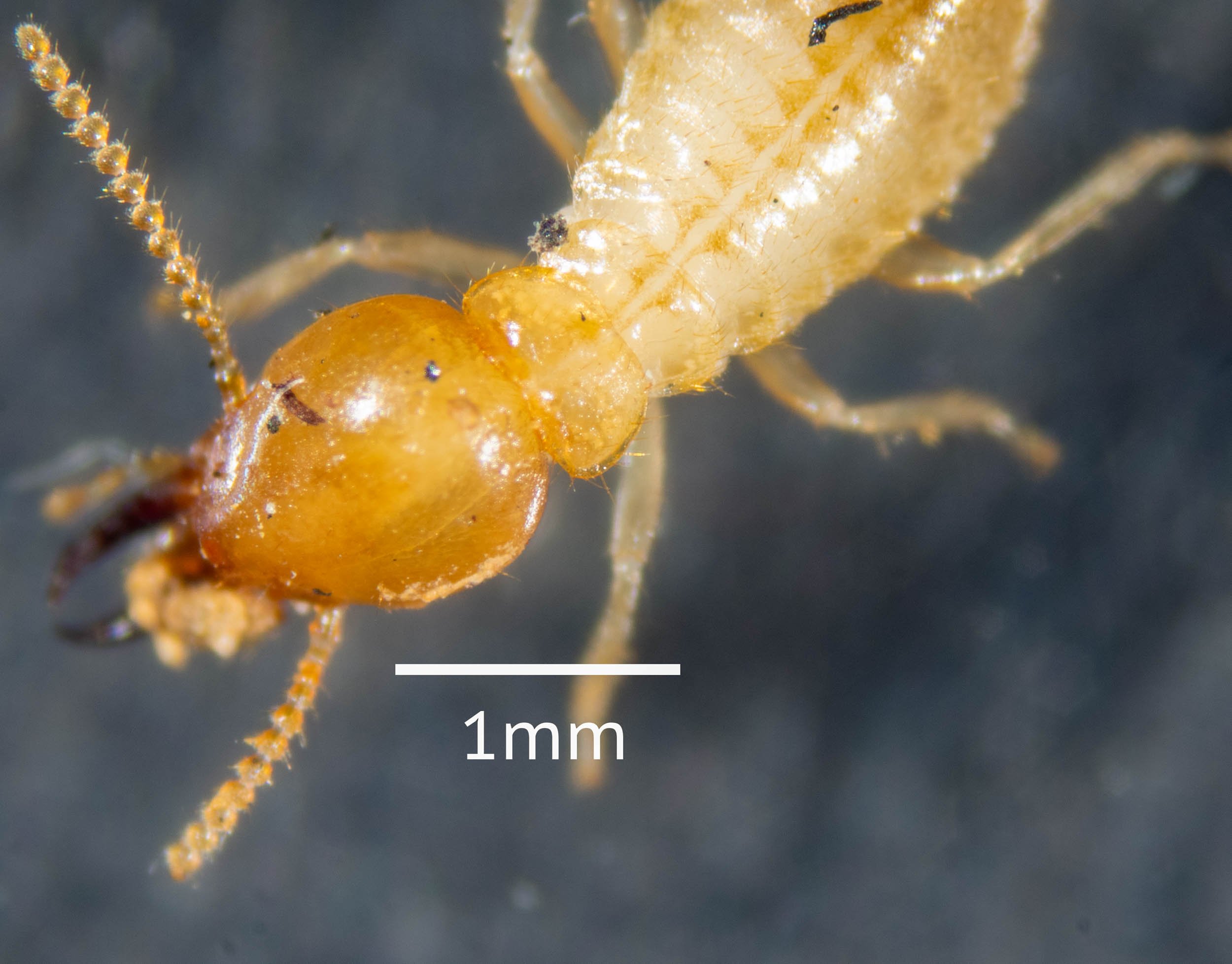
soldier - dorsal view: head broadly rounded on the side and sharply narrowed anteriorly; head and antennae ochraceous, the former sometimes suffused with dark brown, mandibles castaneous, pronotum yellow; frontanelle moderally large; head with sparse hairs, the pronotum and abdomen moderately densely haired; antennae of 13-15 segments, usually 15; 3rd segment shortest of all, 4th and 5th usually equal; head length, without mandibles 1.21-1.46 [1.35]mm; head width 0.99 - 1.28 [1.05]mm
![soldier, ventral view: head length with mandibles 1.90-2.31 [2.00]mm](https://images.squarespace-cdn.com/content/v1/58ec80a8d2b857fe42e4f603/1663629189951-1GR5PU4SDU3HY27BS3PZ/P9100085-Edit.jpg)
soldier, ventral view: head length with mandibles 1.90-2.31 [2.00]mm

Spinifex Termite mound - Tanami Desert
We saw hundreds of these nests during a drive along the Tanami Road in NT. This one was over 2m tall. Hill (1942) states that “the nests of this species (Nasutitermes triodiae) all have the external surface composed of a series of overlapping bulges, represting successive additions to the nest, giving a grotesque appearance”.
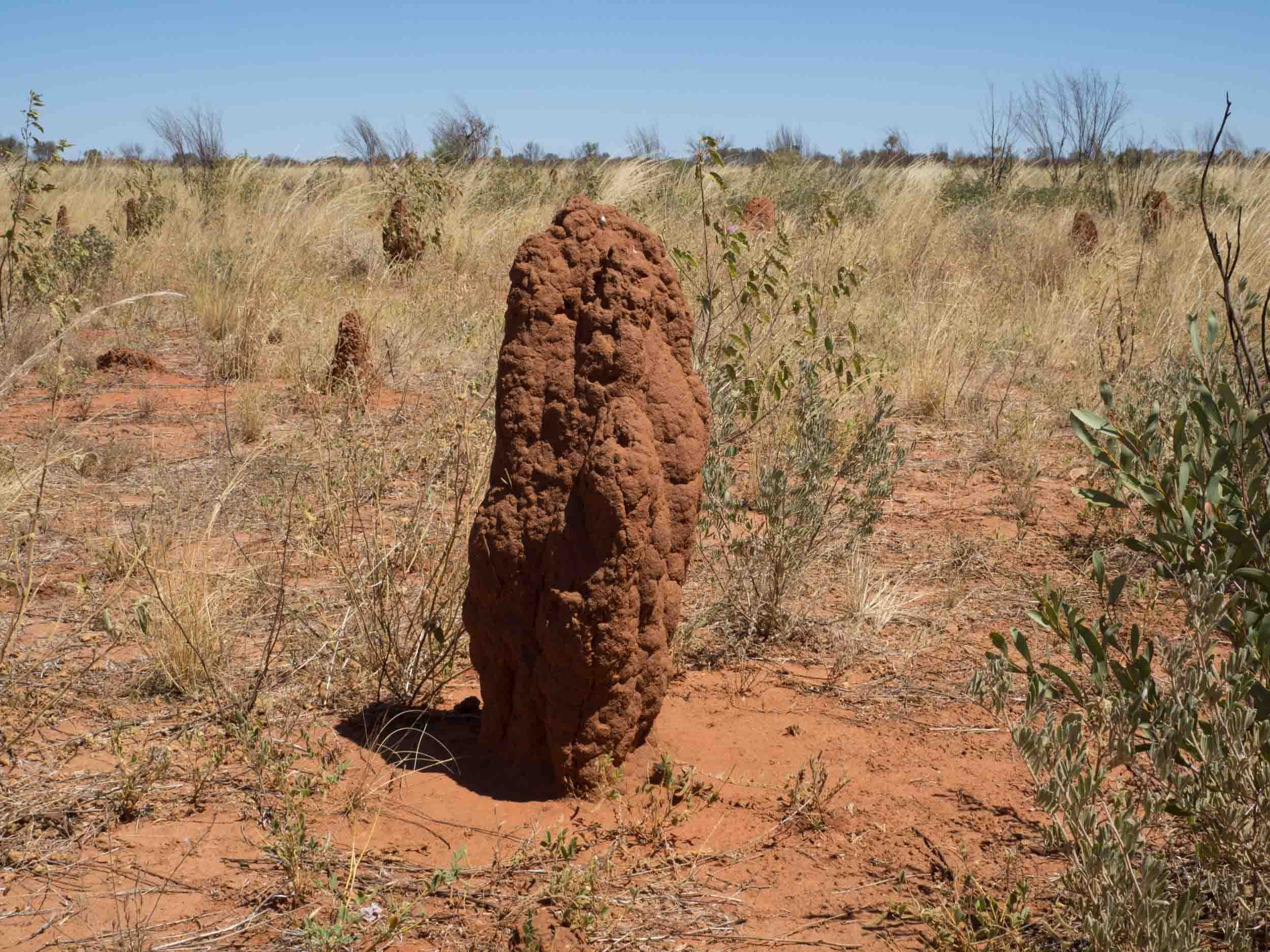
Spinifex Termite mounds
This shot shows many small mounds of the same species of termite. The workers feed their young chaff collected from grasses, like that seen growing nearby.
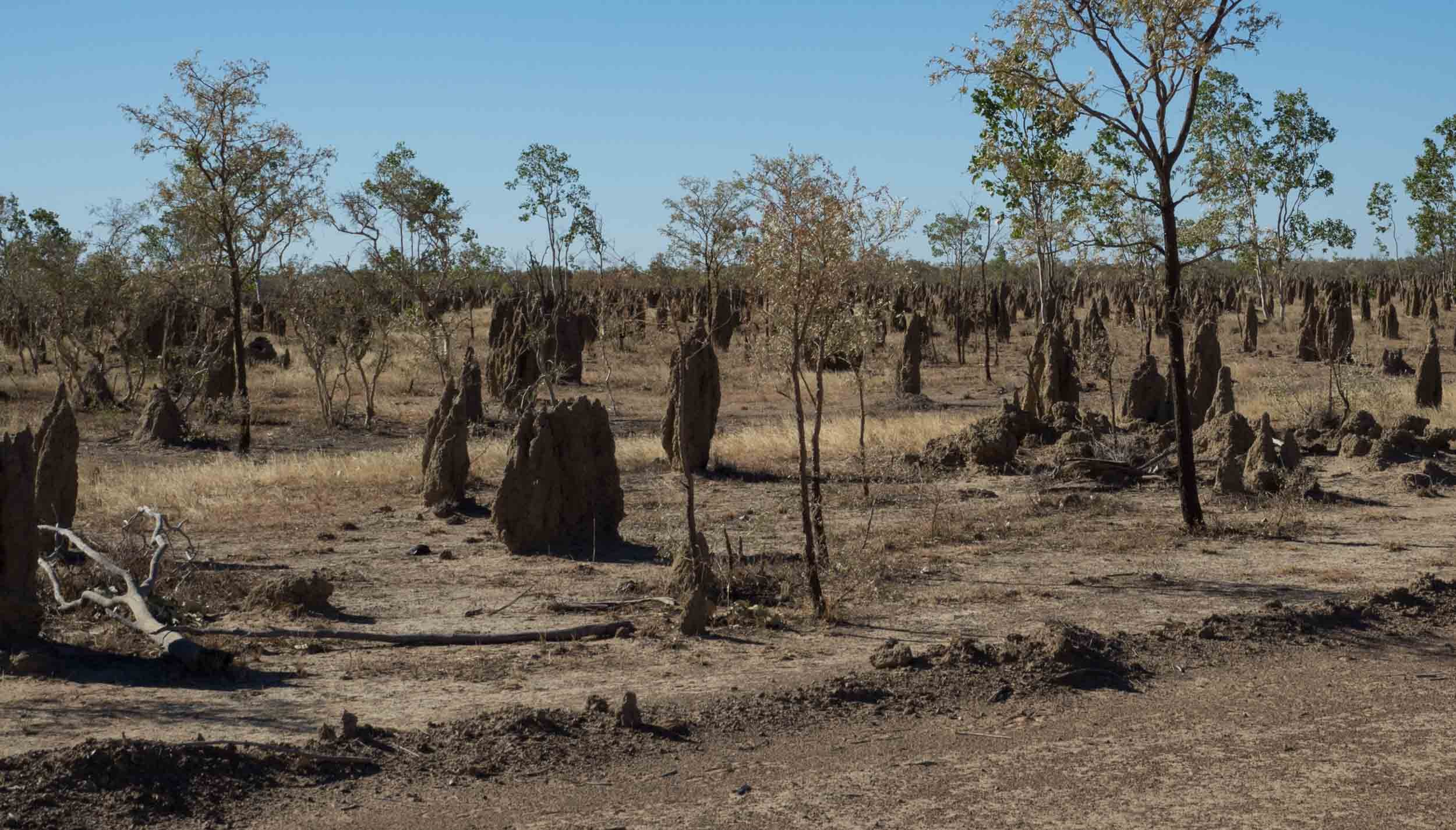
mounds of Amitermes laurensis near Stokes, NW Qld
The mounds of this species are similar to the related and famous Magnetic Termite (Amitermes meridionalis), being oriented with their long axis in a roughly north-south direction. This photo taken in the afternoon shows their flat east-facing sides in shadow.
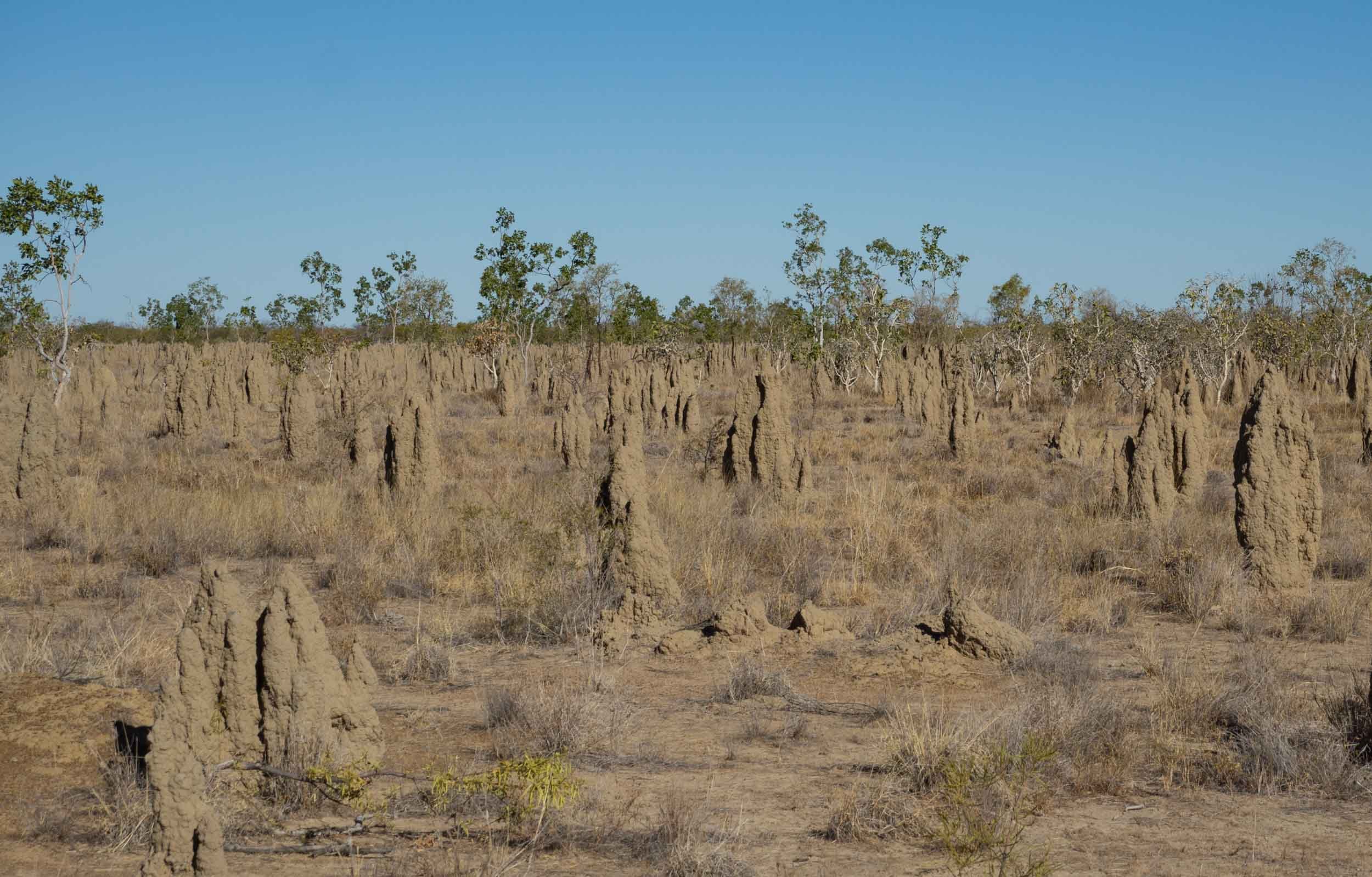
mounds of Amitermes laurensis
This photo of the same area at the same time of day shows the west-facing sides of the mounds. During cool months, the colony gathers in the warmest part of the nest - moving from the east side in the morning, to the west in the afternoon (Hill, 1942).


![dealate female - lateral view: tarsi whitish; head, thorax and abdomen densely clothed with long hairs; eyes moderately large (0.25 x 0.29 [0.25] - 0.33 x 0.36 [0.32]mm diam.), prominent; ocelli small (0.11 [0.10]mm diam.), well separated from eyes](https://images.squarespace-cdn.com/content/v1/58ec80a8d2b857fe42e4f603/1663631180039-1B88NGDY4RIE4RC5ZS64/P9170010-Edit-scale-2.jpg)
![dealate female - ventral view: length of body 5.25 - 7.00 [6.80] mm; width of head 1.06 - 1.30 [1.15] mm; sternites of abdomen mostly yellowish brown](https://images.squarespace-cdn.com/content/v1/58ec80a8d2b857fe42e4f603/1663629234674-7P9CD0SW667WPU38MBLM/P9100095-Edit.jpg)


![soldier, ventral view: head length with mandibles 1.90-2.31 [2.00]mm](https://images.squarespace-cdn.com/content/v1/58ec80a8d2b857fe42e4f603/1663629189951-1GR5PU4SDU3HY27BS3PZ/P9100085-Edit.jpg)




